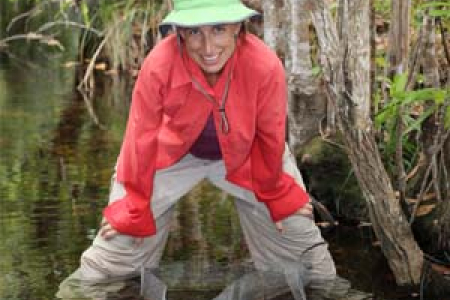NT contributes to global rivers research
The results of a research project investigating the aquatic life of the Northern Territory’s iconic Finniss River will help improve the understanding of rivers across the globe.
Charles Darwin University’s Research Institute for the Environment and Livelihoods Senior Research Fellow Dr Erica Garcia said the project monitoring the catchment would also improve the management of human impact on river systems across Northern Australia.
“The 40-day experiment was created by researchers in the United States, who are conducting research across five sites that range in latitudes from Puerto Rico to Alaska,” Dr Garcia said. “The research by CDU will provide the only tropical location.”
Dr Garcia and her team set up enclosures in the Finniss River catchment in Litchfield National Park for 40 days last year. The results will be collated along with the other sites to produce a model that can be applied to rivers world-wide.
“All the teams involved took the same ecological measurements at smaller scales and larger scales,” Dr Garcia said. “We wanted to assess how small-scale experiments related to whole river system processes and whether small-scale sampling and monitoring could be extrapolated to the entire catchment.”
Dr Garcia said she found that the small-scale results differed significantly from the large-scale results.
“So far it looks like the small-scale experiments may not be giving us all the information we need to make a valid assessment,” she said.
Dr Garcia said it was vital that the methodology used to look at the health of rivers was gathering the correct information for future management.
“Due to funding and personnel constraints, management agencies typically take water quality samples from a few locations at the small scale,” Dr Garcia said. “This sampling may not be representative of the whole catchment.
“This research into methodology and the creation of a global model will assist managers and stakeholders to ensure they are conducting testing, which is representative of the entire river system. They can then ensure that future management is based on robust research.”
All data from the five international sites will now be collated and compared to build a model aimed at understanding rivers types and improving methodology.
“Once we have an idea of a model for the Finniss, we are hoping we may be able to use the model to design a methodology that can be used as a basis for comparable rivers systems such as the Daly River, which are being looked at for future development,” she said.
